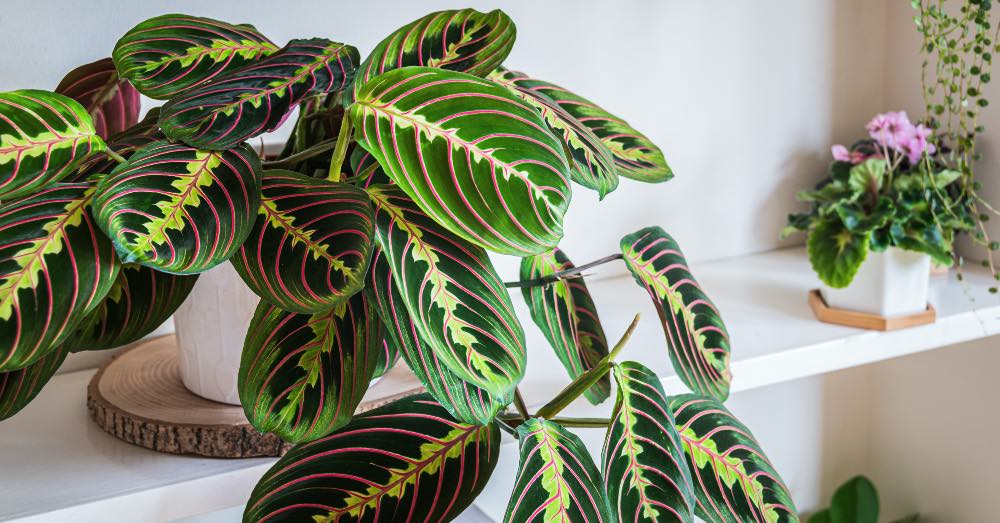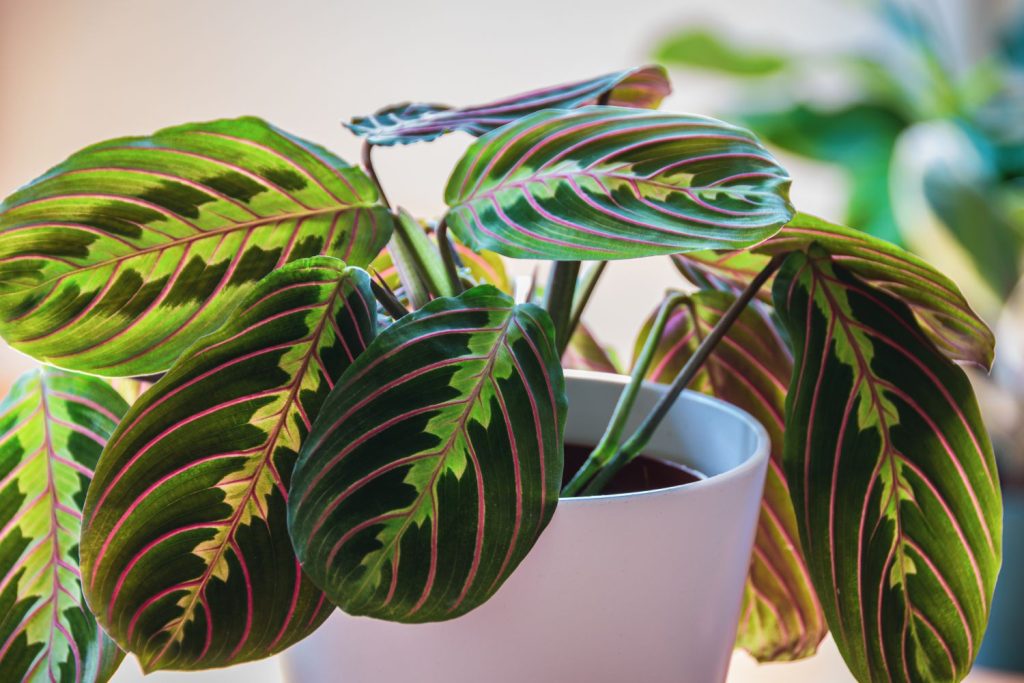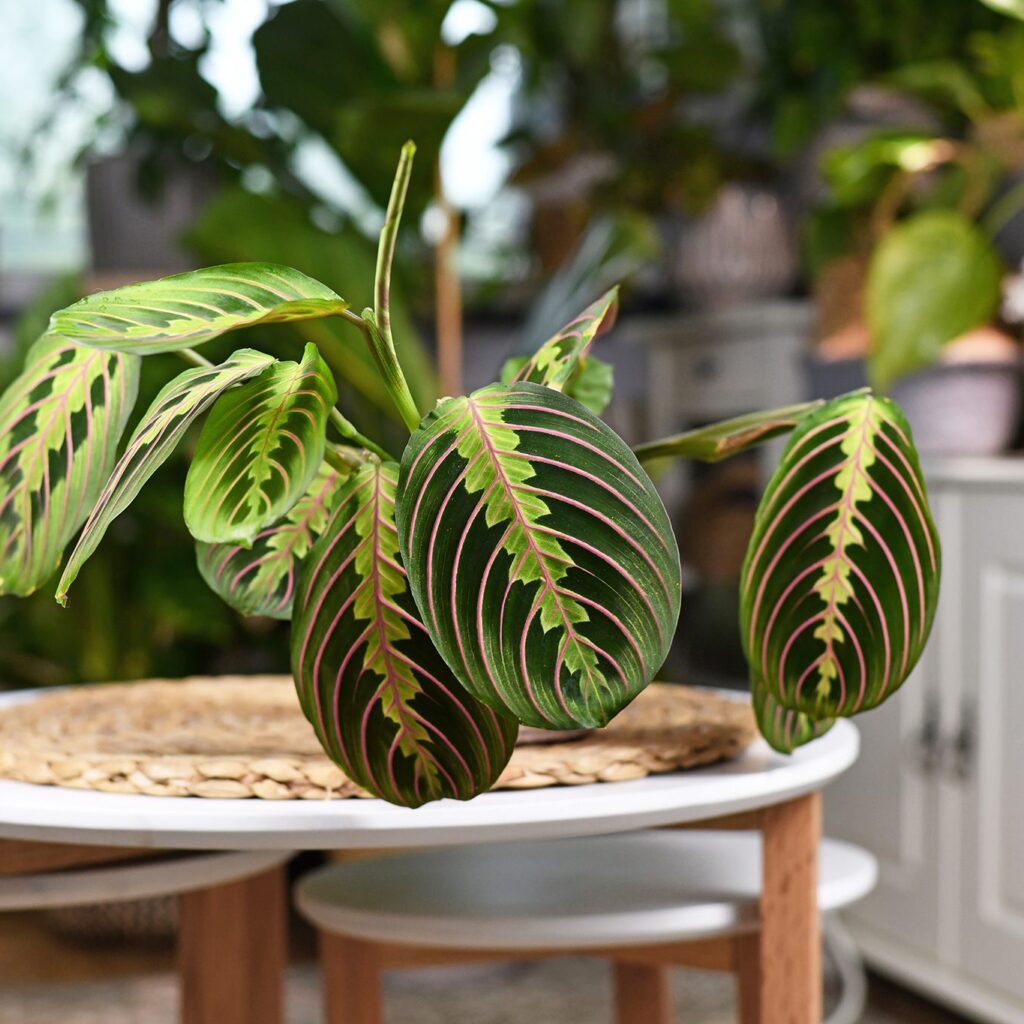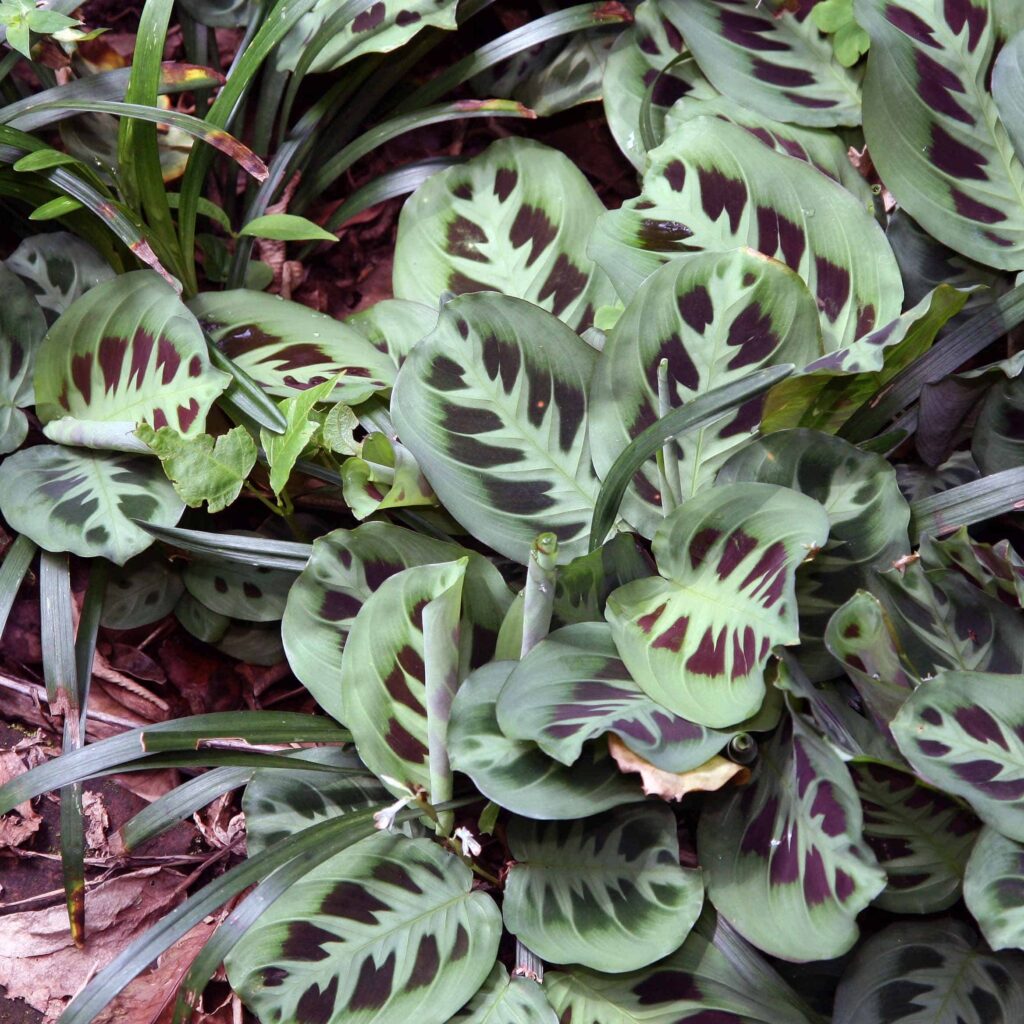If you’re searching for a unique, eye-catching houseplant that’s both beautiful and interactive, the Prayer Plant is an ideal choice. Known for its striking, colorful foliage and its habit of folding its leaves upward at night (like praying hands), this plant adds personality and life to any indoor space.
While Prayer Plants (scientifically called Maranta leuconeura) aren’t as carefree as some other houseplants, with the right care, they’ll reward you with lush, healthy leaves and dynamic movement that makes them feel almost alive.
In this complete guide, we’ll explain how to care for a Prayer Plant efficiently — covering everything from lighting, watering, and soil needs to troubleshooting common problems and propagation tips.

What Is a Prayer Plant?
The Prayer Plant belongs to the Marantaceae family and originates from the tropical forests of Central and South America, particularly Brazil. It’s named for its unique leaf movement, known as nyctinasty — where leaves fold up at night and reopen in the morning.
Several popular varieties exist, including:
- Maranta leuconeura ‘Erythroneura’ (Red Prayer Plant): Deep green leaves with red veins and light green patches.
- Maranta leuconeura ‘Kerchoveana’ (Green Prayer Plant): Light green leaves with dark green blotches.
- Maranta leuconeura ‘Massangeana’: Silver-blue leaves with dark green patches and a velvety texture.
Each variety brings vibrant patterns and colors that make it a show-stopper in any room.

Ideal Growing Conditions for a Prayer Plant
To efficiently care for your Prayer Plant, you’ll need to replicate its native tropical environment as closely as possible. Let’s break down the ideal conditions.
Light Requirements
Prayer Plants prefer bright, indirect light. Too much direct sunlight can scorch the leaves and cause colors to fade, while too little light may slow growth and reduce the vibrancy of its patterns.
Best Locations:
- Near an east or north-facing window.
- A few feet away from a bright south or west window, protected by sheer curtains.
Tip: Yellowing leaves can signal too much direct light, while faded, leggy growth might mean it needs a brighter spot.
Temperature and Humidity
Being tropical natives, Prayer Plants thrive in warm, humid environments.
- Ideal temperature: 65°F to 80°F (18°C to 27°C)
- Avoid: Drafty windows, air conditioners, and sudden temperature drops.
They love high humidity (50% or higher). In dry indoor air, leaves might curl or develop brown tips.
Ways to Increase Humidity:
- Use a room humidifier.
- Place the pot on a tray filled with water and pebbles.
- Group with other tropical plants to create a humid microclimate.
- Mist the leaves occasionally with room-temperature water.

Watering a Prayer Plant
One of the trickiest parts of Prayer Plant care is getting the watering right. They like their soil consistently moist but not soggy.
When to Water
- Check the top inch of soil. When it feels slightly dry, it’s time to water.
- Water more frequently during the growing season (spring and summer) and reduce in fall and winter.
How to Water
- Use lukewarm, filtered, or distilled water if possible. Tap water with high chlorine or fluoride can cause leaf tips to brown.
- Water thoroughly until it drains out of the pot’s base.
- Never let the plant sit in standing water.
Signs of Overwatering:
Yellowing leaves, root rot, and mushy stems.
Signs of Underwatering:
Crispy, brown leaf edges and drooping leaves.

The Best Soil for Prayer Plants
Prayer Plants thrive in light, airy, and well-draining soil. A mix that retains moisture without becoming waterlogged is essential.
Recommended Soil Mix:
- 2 parts peat moss or coco coir
- 1 part perlite or coarse sand
- 1 part potting soil
You can also use a high-quality indoor plant mix labeled for tropical plants.
Fertilizing Your Prayer Plant
Regular feeding helps keep your Prayer Plant lush and colorful.
- Use a balanced, water-soluble houseplant fertilizer (10-10-10 or 20-20-20).
- Dilute the fertilizer to half the recommended strength.
- Feed every 2-4 weeks during spring and summer.
- Avoid fertilizing in fall and winter when growth naturally slows.
Tip: Over-fertilizing can cause salt buildup in the soil, leading to leaf burn. Flush the soil with water every few months to prevent this.
Pruning and Grooming
Prayer Plants benefit from occasional pruning, which encourages bushier, healthier growth.
How to Prune
- Use clean, sharp scissors or pruning shears.
- Trim back any leggy stems, yellowing, or damaged leaves.
- Cut just above a leaf node to promote new growth.
Regularly wipe leaves with a damp cloth to remove dust and keep their patterns vibrant.
Propagating a Prayer Plant
Propagation is a simple and rewarding way to multiply your Prayer Plant.
Propagation by Stem Cuttings
- Cut a healthy stem just below a leaf node, making sure it has at least 2-3 leaves.
- Place the cutting in water, ensuring the node is submerged.
- Keep it in bright, indirect light.
- Change the water every few days.
- Once roots reach about 1 inch, plant the cutting in soil.
Tip: You can also propagate by division when repotting a mature plant.
Common Prayer Plant Problems and Solutions
Even with careful attention, Prayer Plants can run into a few issues. Here’s how to diagnose and fix them.
| Problem | Symptoms | Solution |
|---|---|---|
| Leaf Curling | Dry soil, low humidity, or temperature stress | Water consistently, raise humidity, avoid drafts |
| Brown Leaf Tips | Low humidity or poor water quality | Increase humidity, use filtered or distilled water |
| Yellowing Leaves | Overwatering or too much sun | Adjust watering schedule, relocate to indirect light |
| Leggy Growth | Insufficient light | Move to a brighter location |
| Pests (Spider mites, mealybugs) | Webbing, sticky residue, small insects | Wipe leaves with neem oil or insecticidal soap |
Styling and Display Ideas
Prayer Plants are excellent for adding color and movement to indoor spaces. Here are a few creative ways to display them:
- Hanging baskets: Showcase their trailing vines.
- Tabletop centerpiece: A single Prayer Plant brightens a kitchen or coffee table.
- Grouped with other tropical plants: Create a lush, mini jungle.
- Terrariums: Their humidity-loving nature makes them ideal candidates.
Is the Prayer Plant Safe for Pets?
Good news! Prayer Plants are non-toxic to cats, dogs, and humans according to the ASPCA. However, it’s always best to discourage pets from nibbling on houseplants.
Final Thoughts
While Prayer Plants may require a bit more attention than your average pothos or snake plant, their breathtaking foliage, interactive nature, and air-purifying qualities make them worth the effort.
By providing the right balance of light, warmth, humidity, and consistent watering, you can care for a Prayer Plant efficiently and enjoy its beautiful, dynamic display for years to come.
And remember — those graceful evening prayers, with leaves folding gently upward at night, are your plant’s way of saying thank you.





